
Tupolev Tu-160
The Blackjack, weighing 275 tons at take-off, is the world's heaviest combat aircraft. It is also the only aircraft with a variable-geometry wing that is still series-produced. Starting this program in 1972, the Soviets wanted to have a bomber capable of both reaching an intercontinental range with a subsonic cruise speed and attacking sub-strategic targets in a quick throw, overcoming the enemy's air defense at a dash speed of Mach 2. Each of these tasks required different wing configuration. Blackjack’s outer wing panels are set for three manually selected positions: 20 deg. for take-off and landing, 35 deg. for Mach 0.77 cruise speed, and 65 deg. for supersonic flight.
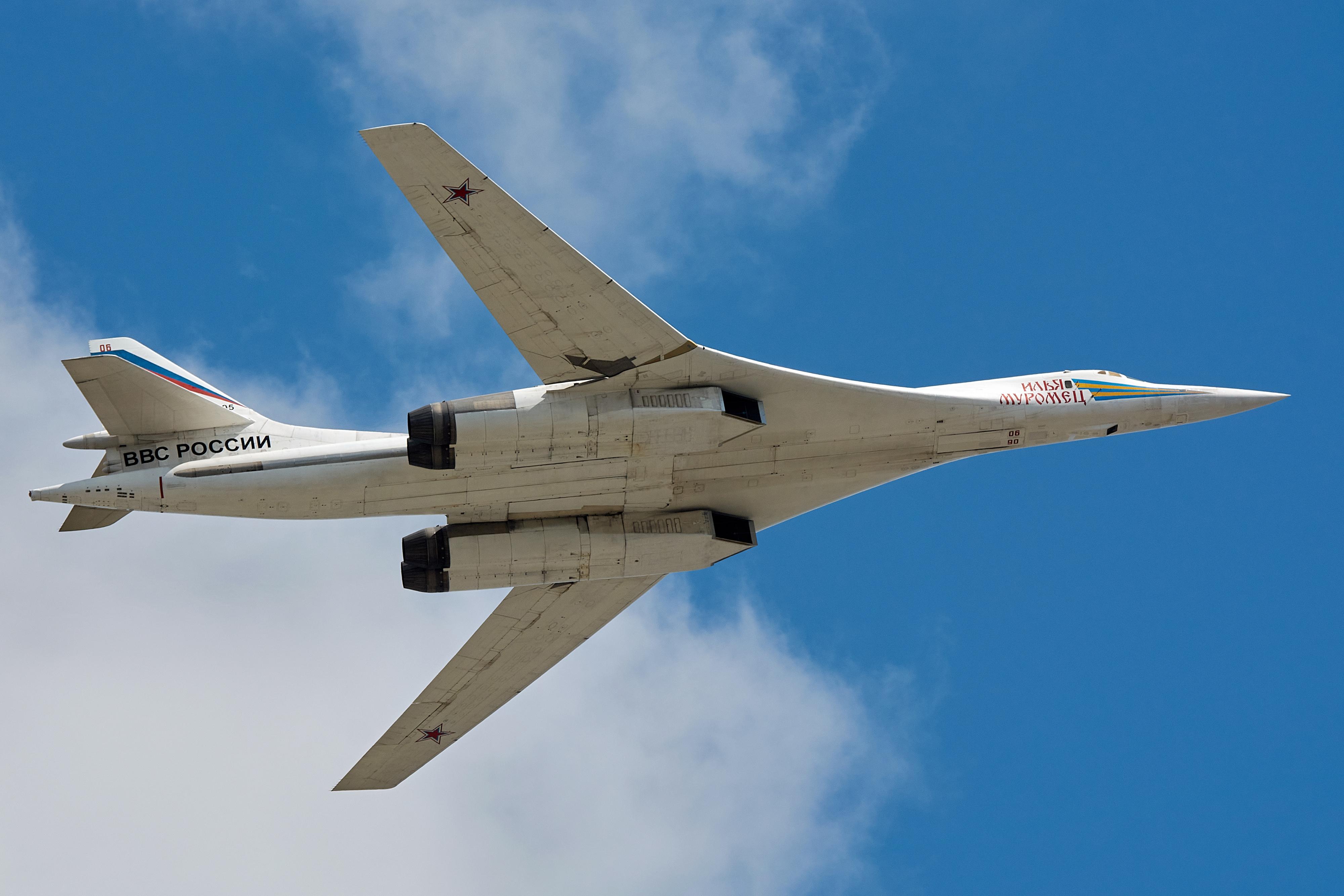
Tupolev Tu-160
In 2009, the Russian Defense Ministry ordered the development of the PAK DA new-generation strategic bomber, giving up supersonic speed and selecting a subsonic “flying wing.” But five years later, after the seizure of Crimea, Russia faced a cash crunch due to Western sanctions and falling oil prices. In 2015, the Russians postponed the PAK DA program and resumed production of the Tu-160. In 2018, the Russian Ministry of Defense placed an order for 10 new Tu-160M bombers to be delivered by 2027. According to official announcements, the first new Blackjack is expected to fly at the end of 2021, but it is doubtful.
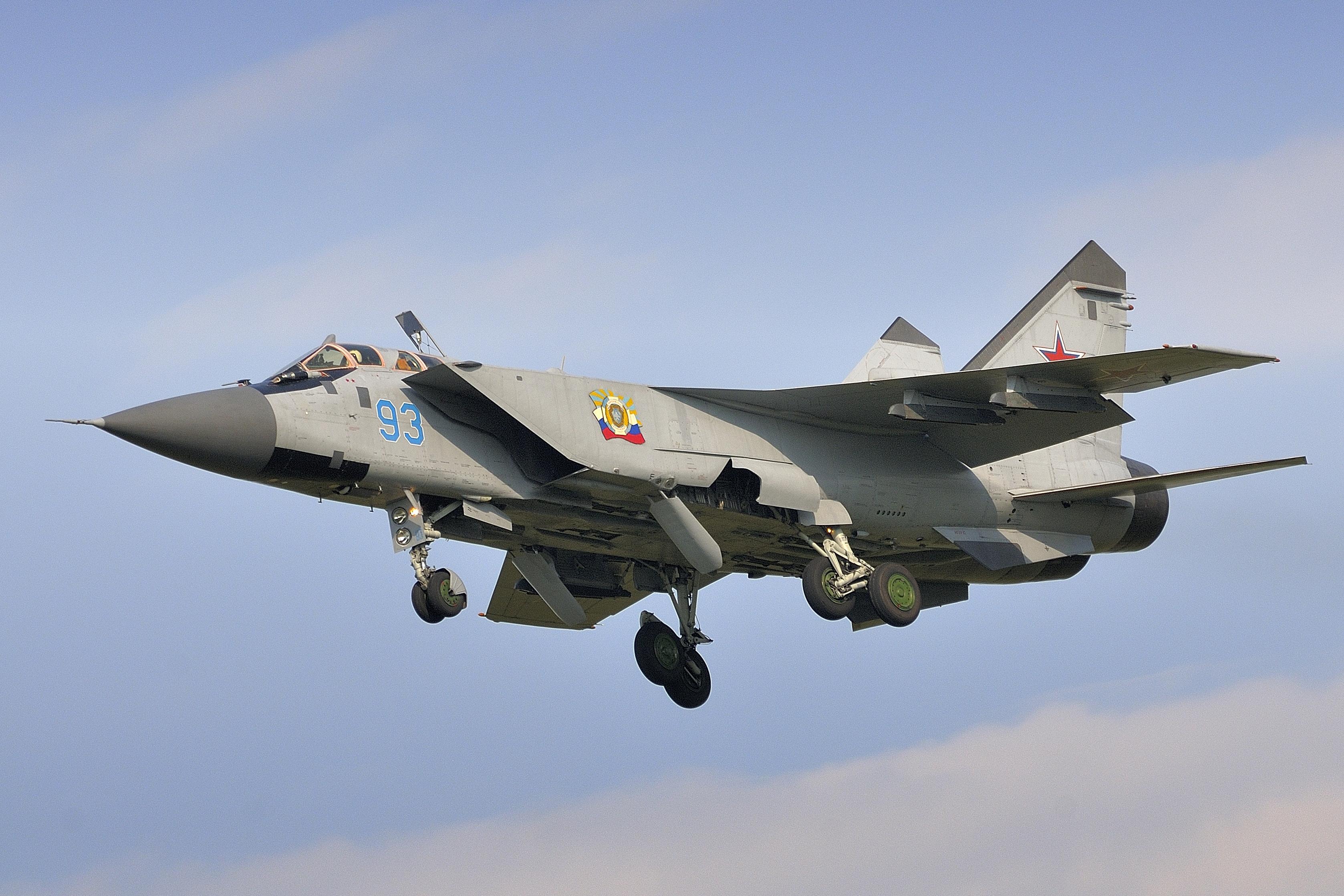
Mikoyan MiG-31
With a take-off weight of 46,200 kg (101,854 lb.), the Foxhound is the heaviest fighter in service, and with a maximum speed of Mach 2.83 and a cruise speed of Mach 2.35, it is also the fastest. The MiG-31 is used to protect Russia's strategically important objects against bomber- and submarine-launched cruise missile attacks. Since the shortest route from (and to) a “probable adversary” – the U.S. – runs through vast expanses in northern Russia where the airfield network is very sparse, the MiG-31 needed to have a long range, and therefore large size. The need for a quick response to the threat resulted in the requirement of a very high flight speed.

Mikoyan MiG-31
To counter multiple targets flying both high and very low at once, the MiG-31 was the first fighter in the world to receive an electronically scanned array radar. The Tikhomirov NIIP institute that developed the RP-31 Zaslon radar declares search ranges of 280 km (174 mi.) for a Boeing E-3, 180 km for a Rockwell B-1 and 65 km for a low-flying AGM-86B cruise missile. Quite unexpectedly, after several decades in service as an interceptor, the MiG-31 got additional capabilities. In 2018, a squadron of MiG-31K Foxhound-D strike aircraft of the Kinzhal system, carrying heavy 9S-7760 (NATO: Killjoy) ballistic missiles, was deployed at the Akhtubinsk Air Base. Two MiG-31 aircraft of the Burevestnik system, carrying 14A045 antisatellite missiles, are undergoing tests.

Tupolev Tu-95MS
The Bear is another aircraft of unusual size, as well as a unique configuration. It has a swept wing with four 11,185 ekW (15,000 ehp) Kuznetsov NK-12MP turboprop engines. Each engine drives an AV-60 propeller unit consisting of two four-blade coaxial contra-rotating disks. Thanks to the swept wing, Bear is the fastest turboprop in the world; the Tu-95MS bomber version achieves a maximum speed of 830 km/h (516 mph); the Navy’s Tu-142MK version is even faster at 855 km/h (531 mph). Tu-95MS Bear-H (shown here) bombers in the Russian Aerospace Forces are often considered old airplanes. But they are far from elderly. These aircraft were manufactured in the second half of the 1980s and in the early 1990s, according to a new deeply revised design, maintaining only external similarity to the first Tu-95s of the 1950s and 1960s. Tupolev is implementing a contract for modernization of the Tu-95MS to the Tu-95MSM version with new avionics and weapons, as well as improved engines.

Irkut MC-21
The MC-21 airliner has a wing made of composite materials; wide-body Boeing 787 and Airbus A350 planes have such wings, too, but the MC-21 is the only one in the narrow-body class. The MC-21’s composite wing is the main advantage relative to competitors, the Airbus A320neo and Boeing 737MAX, as well as the Chinese COMAC C919, which have metal wings. The material for the construction of a wing with specialized aerodynamic characteristics (including a high wing aspect ratio) that cannot be achieved with metal.

Irkut MC-21
But the material has also caused problems for Irkut. U.S.-imposed trade restrictions are blocking the use of fibers, adhesives and pre-pregs from Hexcel Corp. of the U.S. and Toray Industries of Japan. The Russians are launching production of their own similar materials, and the first “Russian” wing for the MC-21 was delivered to Irkutsk plant from the manufacturer, Aerokompozit Co., on May 14.

Kamov Ka-52
The Hokum-B is the world’s only army attack helicopter to have two coaxial counter-rotating rotors. The most important advantage of coaxial rotors is the efficient use of engine power; in a single-rotor helicopter, about 10-15% of the power has to be used to drive the tail rotor. Two coaxial rotors moving in opposite directions make the helicopter aerodynamically symmetrical and more stable. The challenge is the more complicated design of the rotor head and gearbox. The Ka-52 is also the only attack helicopter whose crew is seated side by side, rather than in tandem. What's more, its pilots have ejection seats, not commonly seen in a helicopter.
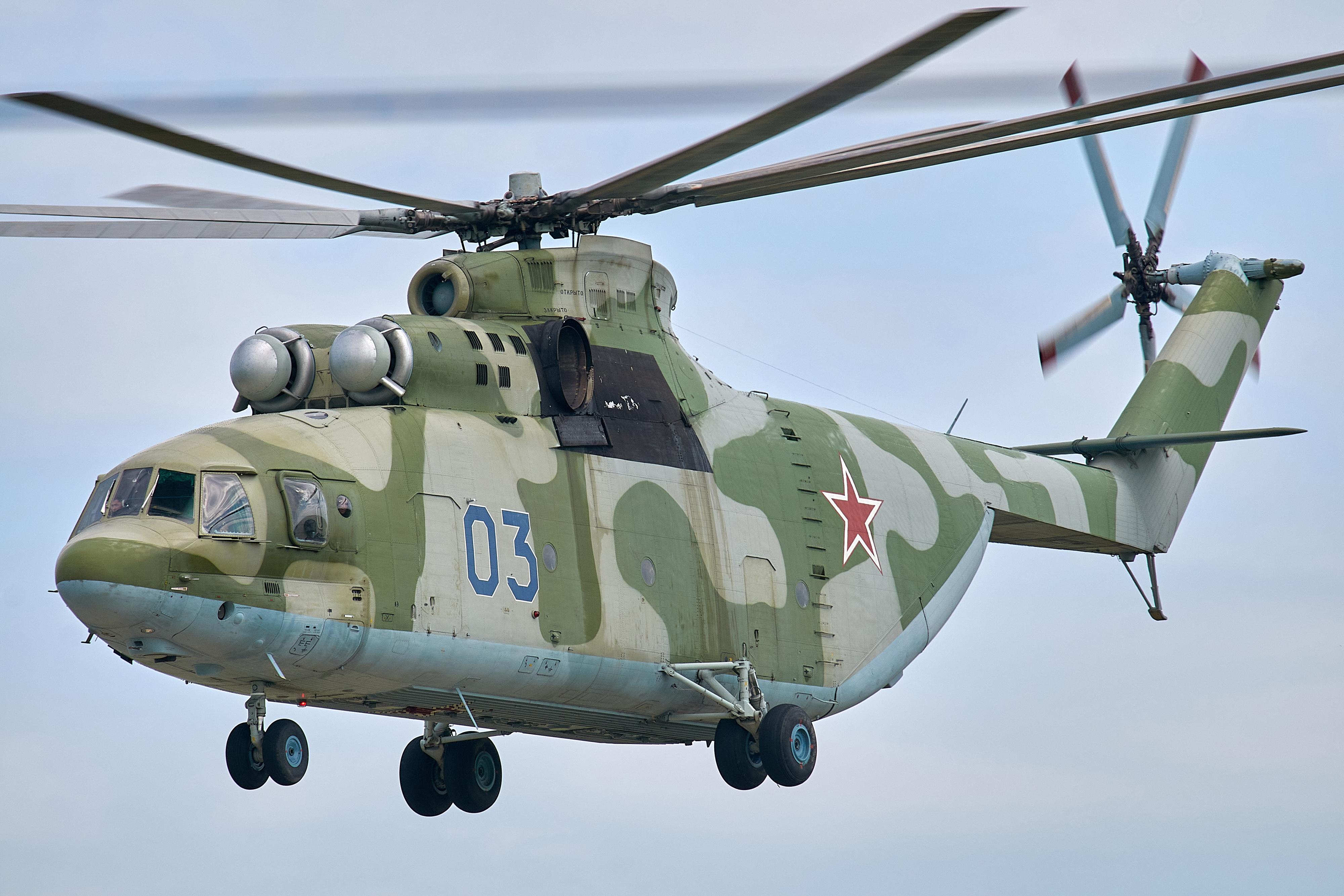
Mil Mi-26
The Halo, nicknamed Korova (Cow) by Russians, is the world’s heaviest operational helicopter; it weighs 56 tons at take-off, of which up to 20 tons is cargo. The Mi-26 is a conventional helicopter with a single 105-ft.-dia. (32 m) main rotor and large unpressurized fuselage accessed via its rear loading ramp. The plant in Rostov-on-Don started production of the Mi-26 in 1980, and it continues to this day, although is now much slower at several helicopters a year. In total, 330-340 helicopters were built, less than half of which are in active service.

Sukhoi S-70
I don't really know what is unique about the Sukhoi S-70 Okhotnik heavy unmanned combat aircraft. However, the Russians stress that the Okhotnik has no counterpart in other countries. As Sukhoi design bureau’s first deputy director Sergey Bibikov told Russian TV in February 2021: in the U.S. "there are quite a large number of other unmanned aerial vehicles, but [they are] of a different purpose, with different tasks.” What is the purpose of the Okhotnik then, aside from the obvious function of a strike or reconnaissance plane? The news agency RIA Novosti reported in December 2020 that Okhotnik had made several flights "in the variant of an interceptor with simulators of air-to-air missiles" over the Ashuluk training ground near Astrakhan in south Russia. It was also announced that the first real launches of air-to-air missiles from the Okhotnik's internal weapon bay are planned for the second half of 2021. These will probably be R-77M beyond-visual-range missiles, the basic air-to-air weapon of the Su-57 Felon fighter. The medium and long-range air-to-air missiles, combined with the S-70’s long endurance, would allow the Okhotnik to be used as a loitering interceptor in Russia’s northern regions. Sukhoi S-70 Okhotnik is a 20-ton subsonic “flying wing” powered by one turbofan engine. The design draws on technology and elements previously made for the Su-57 fighter. The S-70B-1 technology demonstrator has been undergoing flight tests since Aug. 3, 2019. Russian Minister of Industry and Trade Denis Manturov proclaimed at the recent Army exhibition in August that the Russian Defense Ministry would place an order for a large batch of Okhotniks in 2022. The series production will be launched in 2024 by the Novosibirsk Aircraft Plant belonging to Sukhoi.

Tupolev Tu-134
The aircraft dubbed by NATO as Crusty-B, is the largest military trainer in the world. Of the 852 Tu-134 regional commercial aircraft produced between 1966 and 1984, as many as 199 were military versions intended for training Tu-22M3 Backfire and Tu-160 Blackjack bomber crews; almost 20 remain airworthy, in several versions. The Tu-134 was chosen because its thrust-to-weight ratio and takeoff and landing characteristics were similar to those of the Tu-22M; the nose of the Tu-22M was “mated” to a Tu-134 airframe. A replacement for the Tu-134 is planned, called the UTK DA. Reportedly, the UTK DA will be a variant of the Tu-214 airliner, although this seems to be an excessively expensive solution to this future requirement.

Kamov Ka-32
The Helix-C, which was derived from the Ka-27 Helix-A antisubmarine warfare (ASW) helicopter, is the first Russian civilian helicopter with Western certification and Russian industry’s greatest commercial success in the Western world. Russians usually stopped at pursuing national certification; they believed it was enough, because the Russian standards were, in principle, harmonized with world standards. However, the rest of the world did not agree.

Kamov Ka-32
The task that brought Ka-32’s international success was hauling timber from inaccessible places, first in Switzerland, and then in Canada, where the helicopter demonstrated its effectiveness. In 1993, Kamov, with the VIH Logging Ltd. of Sidney, British Columbia, launched a joint initiative to obtain Canadian certification, although it required a lot of work and many profound upgrades to the helicopter. Eventually, the helicopter received certification by Canada and in 2009, from Europe. About 600 Helix helicopters of all versions were built, including over 220 civilian Ka-32s; this is a quite large number for a niche aircraft. Production of the Ka-32A11BC continues at the rate of up to five helicopters per year. Modernized Ka-32A11M helicopter with more powerful engines, new avionics and a new fire extinguishing system debuted at the MAKS air show in July 2021.

Beriev Be-200
The Be-200 is the world’s only jet-powered amphibious aircraft in production and operation. The first task for which the Be-200 was made was firefighting; the plague of forest fires regularly affects Russia's Siberia and the Far East. The initial concept of the plane was much broader, however; the Be-200 was also to be a full-fledged 72-seat passenger plane, and therefore it received a pressurized cabin. The Russians expected that as soon as such an amphibious plane appeared on the market, there would be a demand for it in numerous tourist destinations. In practice, it turned out that airports did exist in places where tourist traffic is large enough to justify the use of a 70-seat passenger plane, rendering sea planes unnecessary. The only version that is produced is the Be-200ChS, a combination of a fire aircraft with a search and rescue aircraft. The Be-200 is a beautiful plane, but it is hardly a commercial success. Many years ago, when launching the Be-200 program, manufacturers expected orders for 400 aircraft in the pessimistic and 800 in the optimistic forecast. In fact, from the first prototype in 1998 until today, only 18 aircraft have been built and just 15 of them are in operation.
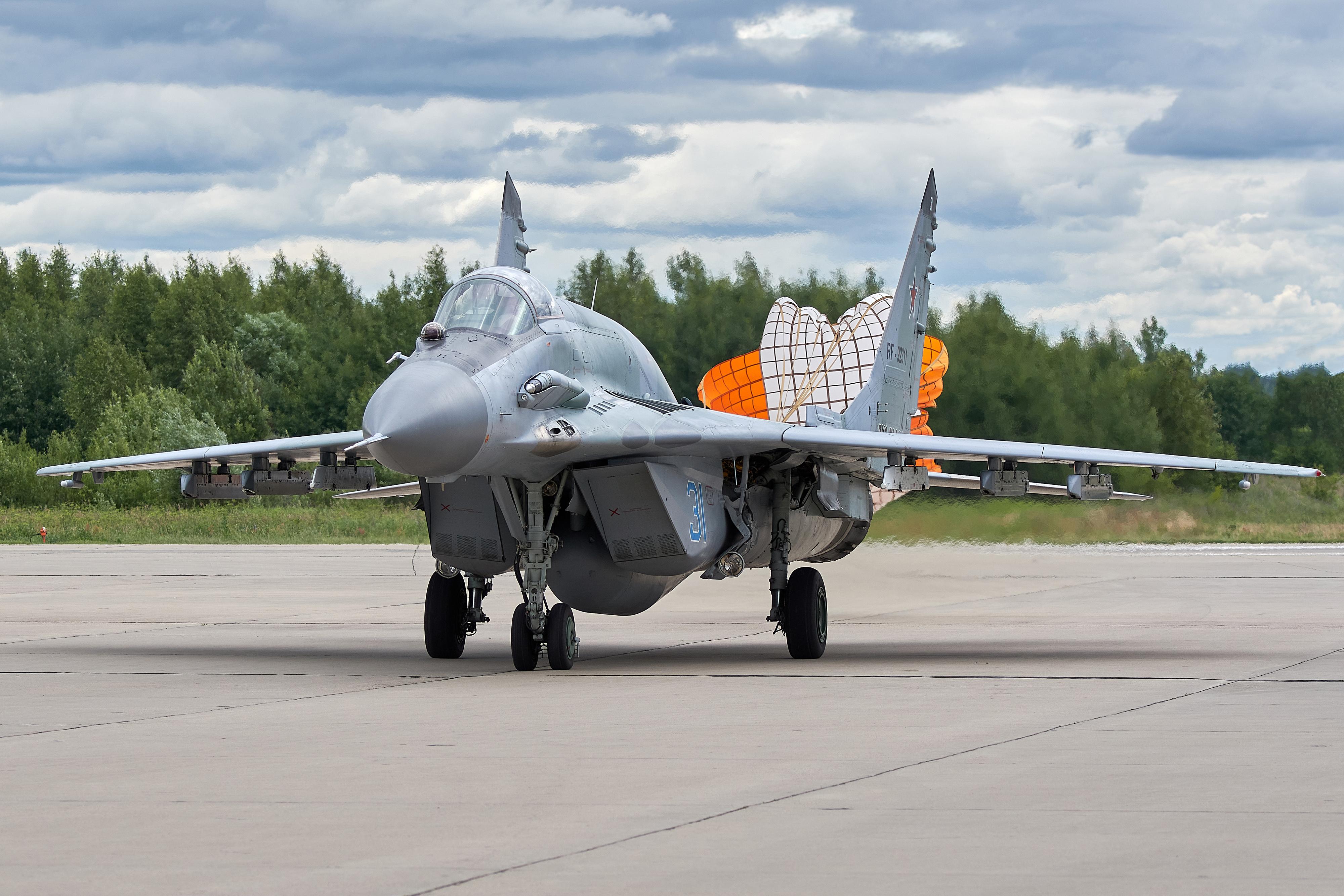
Mikoyan MiG-29 and Yakovlev Yak-130
The Mikoyan MiG-29 Fulcrum fighter and Yakovlev Yak-130 Mitten jet trainer are the only planes with two air intakes for each engine. The first was the MiG-29, which entered service in the early 1980s. For operation from rough, unprepared runways, to protect the engines against foreign objects, the fighter has separate takeoff air intakes on the upper surface of each wing root that allow blanking of the main intakes during taxiing. The main intakes close and open hydraulically when the front wheel is touched or pulled away from the runway.

Mikoyan MiG-29 and Yakovlev Yak-130
A similar idea, with a much simpler design, was used in the Yak-130 trainer years later. The MiG-29 has always suffered from insufficient range, therefore, in subsequent versions of this aircraft, the MiG-29M and MiG-35, additional takeoff air intakes were abandoned, and the engine protection was solved in a conventional manner, through protective nets extended during takeoff and landing. Giving up the takeoff intakes made it possible to fit an additional 1,500 liters of fuel into the wing roots. Similarly, the Italians gave up additional intakes when making the Leonardo (Aermacchi) M346 Master the way it had on the AEM/Yak-130, joint project with Yakovlev.
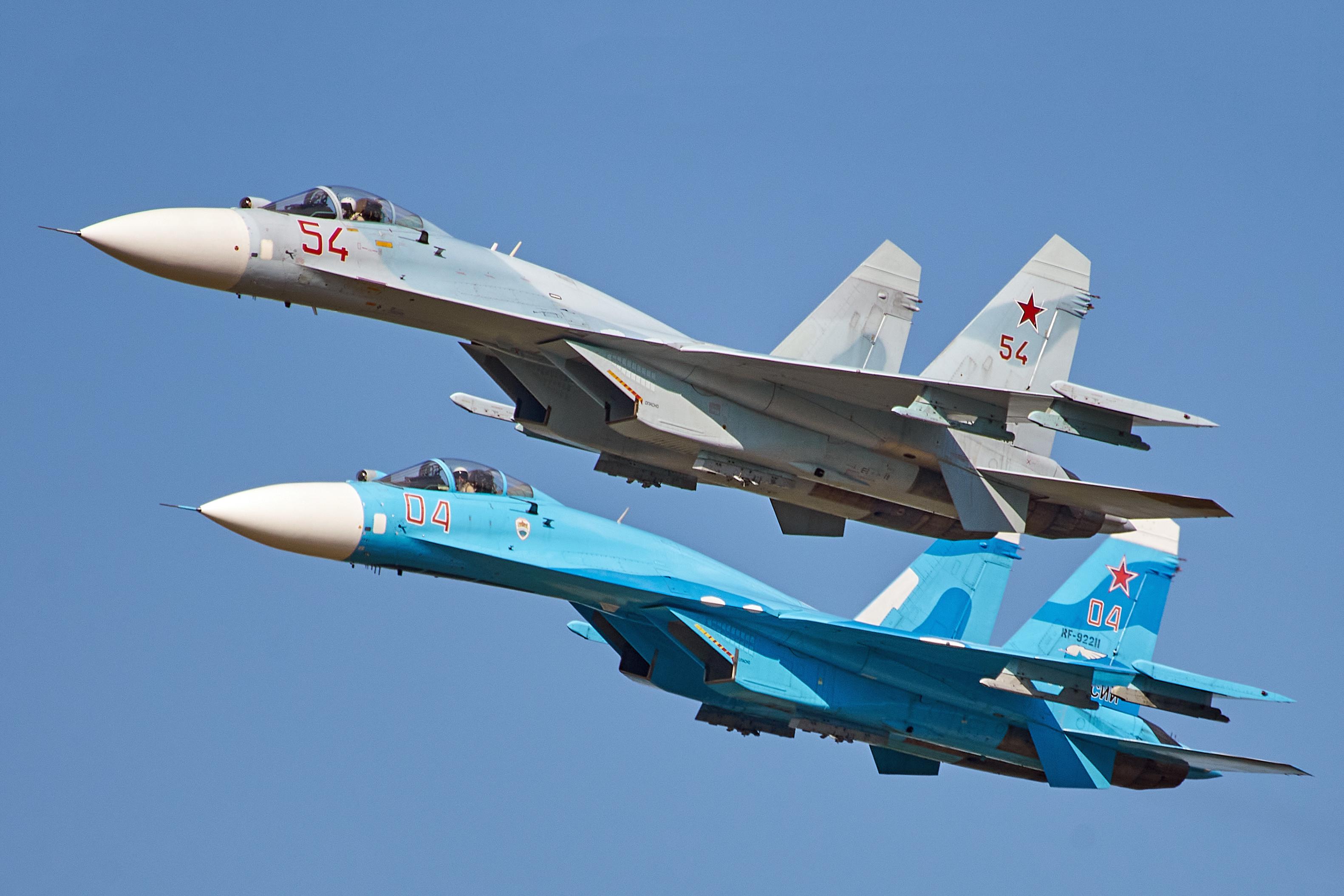
Sukhoi Su-27
Why has nobody seen a Sukhoi Su-27 Flanker-B with external-drop fuel tanks, although they are so common for other fighter aircraft? The Su-27 has plenty of room inside the airframe, because of its blended-body aerodynamic configuration. It turned out during the design process, that the aircraft was capable of attaining required operational flight range with 5,270 kg of fuel while the full internal capacity was 9,400 kg. It may seem this was cause for celebration, but not for the bureaucracy. According to the Soviet aircraft strength standards, the designers were obliged to guarantee operational load factor of 8g with the fuel tanks 80% full. This requirement would necessitate a much stronger and heavier construction. Eventually, the solution was as arbitrary as the standard that landed the designers in hot water. They agreed with the military that the Su-27’s fuel tank’s capacity would be 5,270 kg, and the remaining 4,130 kg would serve as an “internal auxiliary” tank. This is the auxiliary tank that nobody has seen. Thanks to this deal, the engineers were able to make an aircraft very light comparing to its size. The Su-27 typically flies with fuel in two tanks in the wing center section and one in the tail boom, while two tanks in the outer wings are used for ferry flights only; it does not carry external drop tanks.
The laws of physics are the same everywhere, but the requests of aircraft users, as well as the competences and traditions of aircraft manufacturers, vary. Those permutations have led to an incredible diversity in aircraft around the world. But nowhere is it more apparent than in Russia, where geopolitics, bureaucracy and engineering have collided to produce some of the world’s most unique aircraft.